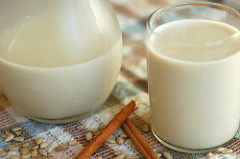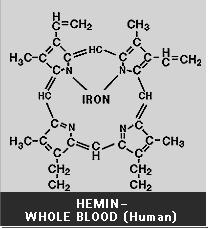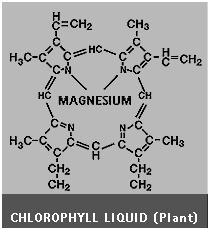This article strongly links to my writing about vitamins. Vitamins Part 1 was to explain how vitamins and minerals work in general. We know, that vitamins are fundamental to us and that they cannot be utilized without the minerals that are taking an important part of almost every step of the metabolism. In Part 2 we concentrated on the vitamins in wheatgrass / spelt grass juice and what these vitamins are proven to do in your body. Now we are going to investigate the effects that some of the minerals found in wheatgrass juice can do for us. Out of many in it I think the most important ones are Calcium, Iron, Magnesium, Potassium, Sodium, Selenium and Zinc.
Calcium
I say Calcium you say bones…who wouldn’t think of that straight away. But did you know that this mineral also supports your heart, your muscles and your nerves to carry information from your brain to the rest of your body? Calcium also takes part in the moving of the blood and blood clotting. Not consuming enough calcium wouldn’t cause any harm at first as our bodies replace our needs from our bones, but as you can guess that’s not good on the long run. Long term low consumption can lead to low  bone mass and abnormal heart rhythms. If you have muscle cramps and twitches on a regular basis, you’d better increase your intake and see whether this solves your problem as low Calcium levels may well be the cause.
bone mass and abnormal heart rhythms. If you have muscle cramps and twitches on a regular basis, you’d better increase your intake and see whether this solves your problem as low Calcium levels may well be the cause.
Calcium is not only in dairy products, but in nuts and green vegetables as well such as broccoli, kale and wheatgrass.
Iron
This is an essential mineral playing a very important role in our bodies. As the centre of the haemoglobin, the protein in the red blood cells, carries the oxygen and helps to store it in our  muscles. It is a part of many enzymes supporting metabolism and is also necessary for growth, normal cellular functioning and the preparation of some hormones and connective tissue.
muscles. It is a part of many enzymes supporting metabolism and is also necessary for growth, normal cellular functioning and the preparation of some hormones and connective tissue.
The most obvious sources are lean meat and liver, but if you are a vegetarian, there are still a lot of options for you: opt for beans, seeds, tofu, dark chocolate and leafy greens.
Magnesium
Magnesium is needed for more than 300 processes in the body including maintaining normal nerve and muscle function and supporting a healthy immune system. Supports the heart and regulates blood sugar and blood pressure, helps bones to remain strong. It contributes to the structural development of the bones and stabilizes DNA structures. This mineral also cooperates in the repair of DNA damage by environmental mutagens. A low Magnesium level can be the other cause for muscle cramps.
Magnesium is the central element in chlorophyll, which gives the green colour of plants, so the greener your veg, the more Mg it will have in it. The top foods with high magnesium are therefore leafy greens including wheatgrass, but there is a lot in nuts and seeds, whole grains, beans and yes, chocolate lovers, this is in dark chocolate as well. Besides, bananas, fish and bananas are also high in Magnesium.
Potassium
It is amongst the most abundant minerals in the human body and maintaining the right levels is in our interest for well being. It supports your nervous system and brain function including memory and learning, maintains your optimal muscle functions including your heart and helps to keep a healthy blood pressure and blood sugar levels. It boosts the metabolism and improves bone health.
The deficiency of any nutrient in the body is undesirable and potassium is not an exception. Low levels of this mineral can result in high blood pressure, abnormal heartbeat, fatigue and muscle weakness.
Boiling depletes potassium and cooking can reduce the potassium levels in food by up to 50%, so eat raw vegetables and fruits or opt for steaming and roasting.
 Nuts, legumes and green leafy vegetables are the highest in potassium. Avocados and bananas are also well known for their high levels.
Nuts, legumes and green leafy vegetables are the highest in potassium. Avocados and bananas are also well known for their high levels.
Potassium has an interesting impact on our taste buds as according to the concentration the taste can change drastically. Diluted versions are rather sweet, but the more the potassium the bitter it gets until it becomes salty. This most probably contributes to the interesting taste of wheatgrass and avocado (which is actually a fruit not a vegetable) where sweetness is combined with saltiness.
Sodium (Na)
Sodium is essential to the body as it helps it to keep fluids in a normal balance. It is used to control blood pressure and blood volume. Your body also needs sodium for your muscles and nerves to work properly. It is not surprising that too little or too much sodium in the body can have an adverse effect, however your healthy body regulates sodium levels carefully to prevent levels from getting too high or too low.
We take sodium into our bodies mainly in the form of NaCl, which is the common table salt and leaves our body with urine and sweat. This compound is also the ingredient of physiological (isotonic) saline solution (0.89% NaCl in sterile water) that approximates to tissue fluid and is used for medical purposes to replace lost fluids in the body.
Low levels of Sodium are highly unlikely as all foods contain it, unless you’ve been ill with serious diarrhea or vomiting.
While too much salt in our diet is bad for us, a certain amount is vital for human health. Since processed meats like bacon, sausage and ham and canned soups and vegetables also contain added sodium (not always in the form of NaCl, e.g Soidum Nitrate), we really need to watch our diets. I personally am very picky when it comes to buying my salt I use for cooking as I am notoriously avoiding unnecessary additives and I’m only happy if I buy products that state 100% NaCl on them (these are not easy to find).
Selenium
Selenium plays an important role in reproduction, supports thyroid function and DNA production. This mineral is a first class antioxidant.
The best food sources are nuts, cereals and mushrooms. Other sources include meat, other grains and dairy products.
Zinc
Zinc needs to be taken in every day as we cannot store it. However it plays many important roles in different processes including wound healing, fighting bacteria and viruses, DNA and protein preparation. We also need it for two of our main senses, taste and smell, not to mention its part in pregnancy where Zinc is needed for the infants’ growth and development.
Oysters have the most Zinc out of all foods. Other seafood, meat, beans, nuts, pumpkin seeds, cocoa and spinach have also quite good levels in them.
Zinc deficiency is hard to measure and the symptoms are not specific so it can be are easily overlooked.
As we see keeping a healthy diet is crucial, but easily done with some minor efforts. Drinking wheatgrass regularly can help you to maintain a good level of these minerals in your body.

FOTO:BORBELY AGI

